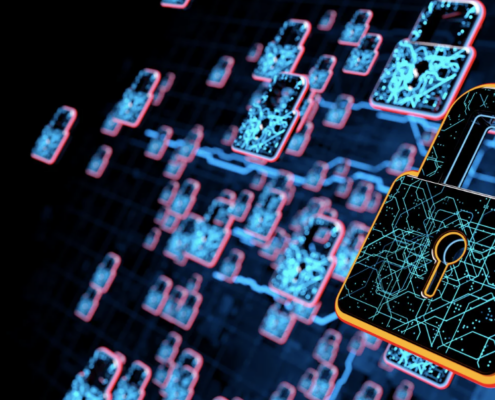 https://www.teamipro.com/wp-content/uploads/2025/03/Blog1-IPRO-March-2025.png
604
1202
Pat Anunciacion
https://www.teamipro.com/wp-content/uploads/2023/07/IPRO.png
Pat Anunciacion2025-03-10 10:00:082025-03-14 19:07:48How Business Continuity Dallas Protects Your Business from Cyber and Operational Threats
https://www.teamipro.com/wp-content/uploads/2025/03/Blog1-IPRO-March-2025.png
604
1202
Pat Anunciacion
https://www.teamipro.com/wp-content/uploads/2023/07/IPRO.png
Pat Anunciacion2025-03-10 10:00:082025-03-14 19:07:48How Business Continuity Dallas Protects Your Business from Cyber and Operational ThreatsIoT Network Security: Safeguarding the Future
The advent of the Internet of Things (IoT) has reshaped business operations, integrating smart devices into everyday use, broadening network security. This new era presents complex challenges as each IoT device can be a potential security risk, emphasizing the need for robust network security to effectively protect and leverage these technological advancements.
As businesses adopt IoT technologies, they encounter risks and opportunities. The expanded network perimeter increases vulnerability to cyber threats, necessitating a shift in security strategies. This shift, however, offers a chance to strengthen defenses and transform potential weaknesses into competitive advantages, ensuring businesses remain resilient and secure in the interconnected landscape of the IoT era.
Understanding IoT Network Security
The IoT is changing how we live and work, connecting everyday objects like appliances and sensors to the Internet. This makes things more efficient and gives us valuable information. However, as more devices connect, they can open doors for hackers, increasing security risks. Protecting these devices is important because they’re not all built with strong security.
Securing IoT devices can be challenging. They vary a lot, and not all have good security. This mix can create weak spots for hackers to attack. These devices often handle essential data, so a breach can be a big deal. Problems include different security levels and limited device capabilities, making it hard to apply robust security everywhere.
Lately, there have been significant security issues with IoT. For example, the Mirai attack used simple passwords to hijack many devices, causing big Internet problems. Another case saw hackers controlling smart home devices. These events show why strong security is essential, as they can lead to lost trust and significant business losses. They remind us to keep improving security to handle new IoT challenges.
Evolving Threats and Network Security Measures
IoT devices are often easy targets due to weak security features. They face threats like ransomware, data theft, and large-scale network disruptions. Addressing these requires strategies beyond conventional security measures, focusing on the specific nature of IoT technologies. Key practices include strong encryption, regular software updates, and strict access controls. Continuous network monitoring is essential to detect threats early. Additionally, frequent software updates and vulnerability assessments help prevent attacks by fixing flaws and identifying weaknesses.
A comprehensive approach involves monitoring device activity, updating software promptly, and conducting thorough security checks. Managed IT services in Dallas can play a vital role in this process by providing continuous monitoring, timely updates, and proactive security management for IoT networks and devices. These steps are crucial for maintaining the integrity of IoT systems, ensuring they remain shielded from emerging cyber threats.
Leveraging AI and Machine Learning for IoT Security
Integrating Artificial Intelligence (AI) and Machine Learning (ML) into IoT security is transforming how businesses detect and respond to threats. These technologies can analyze vast amounts of data from various devices, identifying patterns that may indicate a security breach. By learning from previous incidents, AI and ML can predict and neutralize threats before they cause harm, providing a proactive approach to network security.
AI-Enhanced IoT Security Solutions in Action
Real-world applications of AI in IoT security include anomaly detection systems that identify unusual behavior in connected devices, which could signify a security threat. For example, AI algorithms can monitor smart home systems for irregular activities, such as unexpected access to cameras or locks, and immediately alert homeowners or authorities. These AI-driven systems adapt over time, continually improving their accuracy and effectiveness in detecting and responding to new threats.
The Role of Policy and Compliance in IoT Security
Ensuring Security through Regulatory Compliance
Compliance with regulatory standards is crucial for maintaining IoT security. Regulations ensure that devices and networks adhere to specific security protocols, reducing vulnerabilities. For businesses, staying compliant protects against cyber threats, builds customer trust, and avoids legal penalties. Understanding and implementing these regulations is essential for securing IoT ecosystems.
Navigating Standards and Policies
Several standards and policies specifically address IoT network security, such as the GDPR in Europe, which emphasizes data protection and privacy for IoT devices. The NIST framework provides guidelines for improving IoT security in the United States. Businesses must stay informed about these standards and integrate compliance into their IoT security strategies, ensuring their operations and devices are both secure and legally compliant. This alignment between security measures and regulatory requirements is vital for IoT technology’s safe and effective use.
Future Trends in IoT Network Security
As we look to the future, IoT is set to become even more integrated into our daily lives and business operations. With this growth, network security must evolve to address potential threats’ increasing complexity and scale. We predict a surge in developing more sophisticated security technologies, including smarter AI-driven defense mechanisms and advanced encryption methods to protect data transmitted by IoT devices.
The future of IoT security will likely see the adoption of blockchain technology for enhanced data integrity and validation, and the broader use of quantum computing to break and secure encryption standards. Additionally, there will be a greater emphasis on zero-trust architectures, ensuring devices and users are authenticated and continuously verified to secure networks.
Preparing for Future IoT Security Challenges
For CIOs, CEOs, and business leaders, staying ahead of IoT security challenges requires proactive and strategic planning. Understanding the evolving landscape and potential risks associated with IoT devices and networks is crucial. Leaders should foster a culture of security awareness within their organizations, ensuring that all stakeholders understand their role in maintaining network security.
Integrating IoT security into the overall business strategy is vital. This involves conducting regular security audits, updating risk management frameworks to include IoT-specific threats, and investing in employee training and cutting-edge security solutions. Establishing clear policies and procedures for IoT device usage and data management can mitigate risks.
Strategic Alliances for Robust IoT Security
The evolution of network security in the IoT age presents challenges and opportunities. As we have explored, staying ahead requires adopting advanced technologies, adhering to regulatory standards, and implementing strategic security measures. Partnering with a specialized IT company like IPRO can provide businesses with the expertise and resources needed to navigate this complex landscape.
By collaborating with experts, businesses can tailor their IoT network security to meet specific needs, ensuring robust protection against emerging threats. For business leaders, the time to act is now — to prioritize and innovate in IoT network security with a trusted IT partner. Doing so not only safeguards against potential risks but also unlocks the full potential of IoT to drive growth and operational efficiency
 https://www.teamipro.com/wp-content/uploads/2025/03/Blog1-IPRO-March-2025.png
604
1202
Pat Anunciacion
https://www.teamipro.com/wp-content/uploads/2023/07/IPRO.png
Pat Anunciacion2025-03-10 10:00:082025-03-14 19:07:48How Business Continuity Dallas Protects Your Business from Cyber and Operational Threats
https://www.teamipro.com/wp-content/uploads/2025/03/Blog1-IPRO-March-2025.png
604
1202
Pat Anunciacion
https://www.teamipro.com/wp-content/uploads/2023/07/IPRO.png
Pat Anunciacion2025-03-10 10:00:082025-03-14 19:07:48How Business Continuity Dallas Protects Your Business from Cyber and Operational Threats
Protect Your Business with Network Security Specialists



